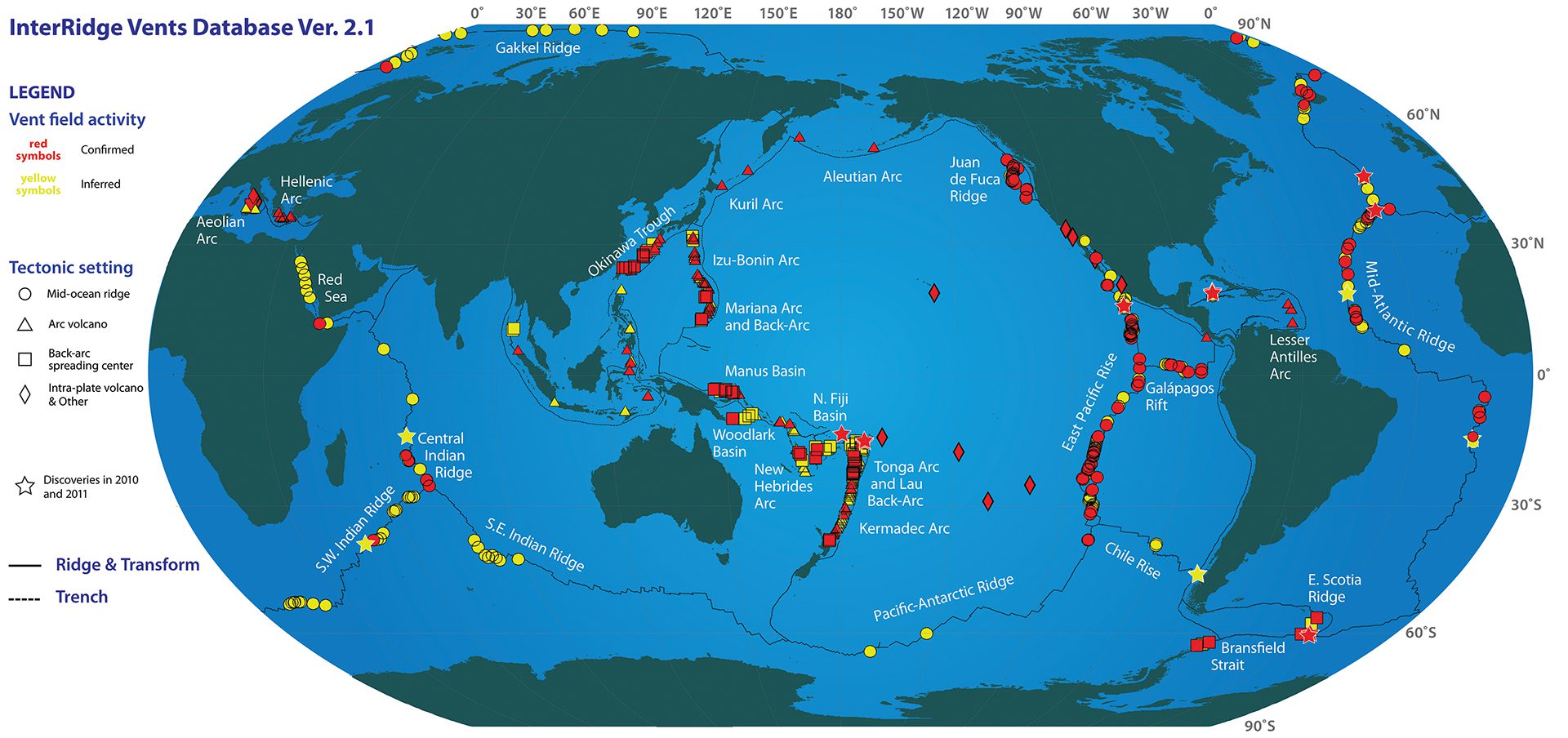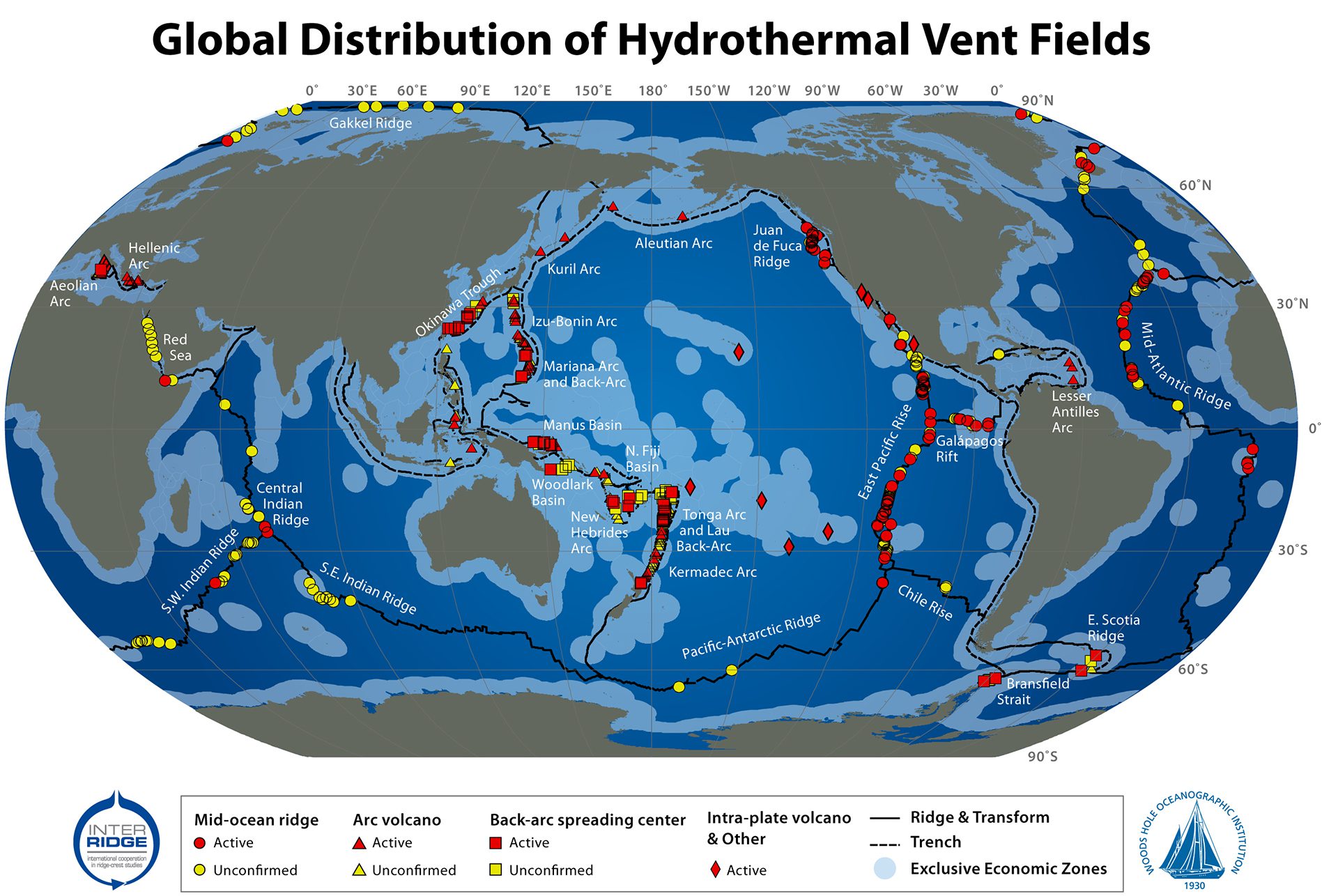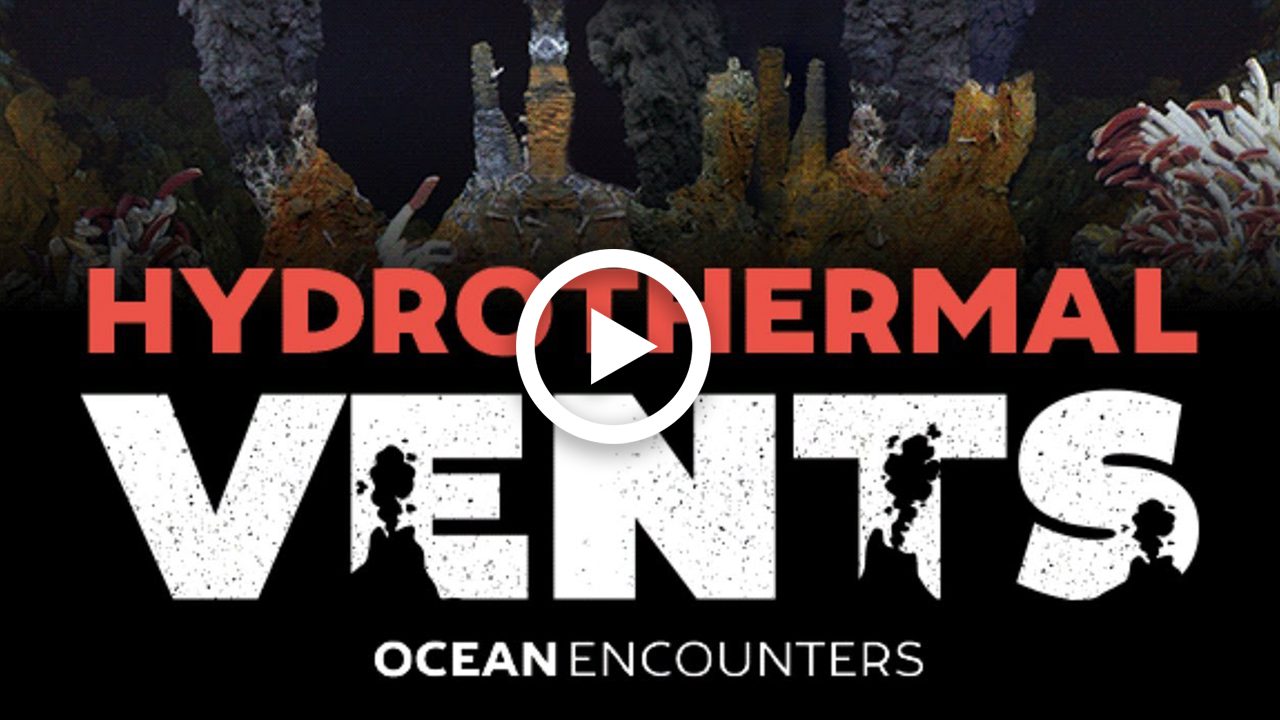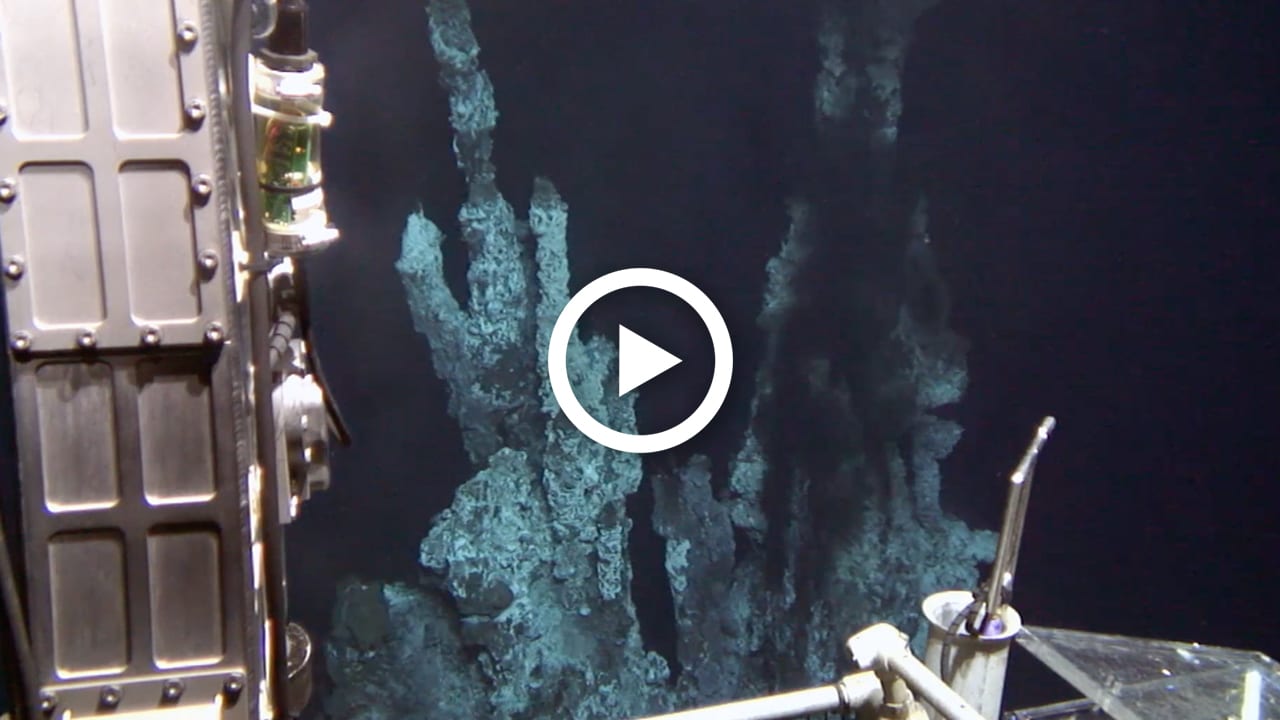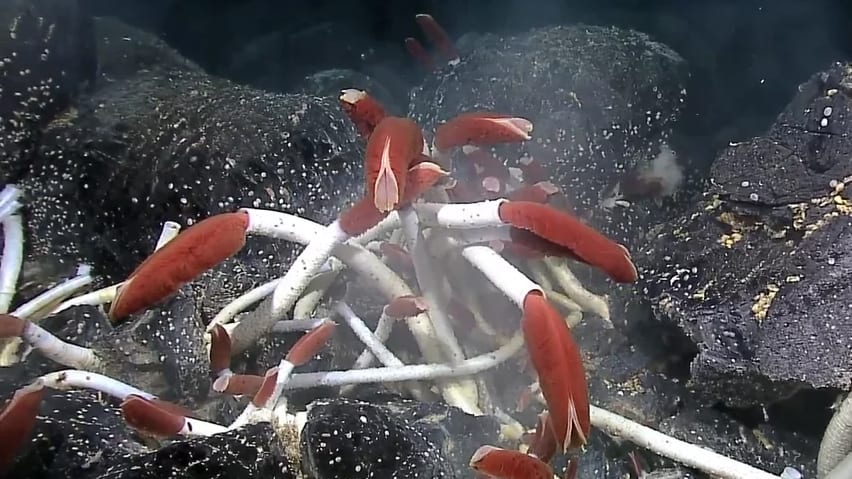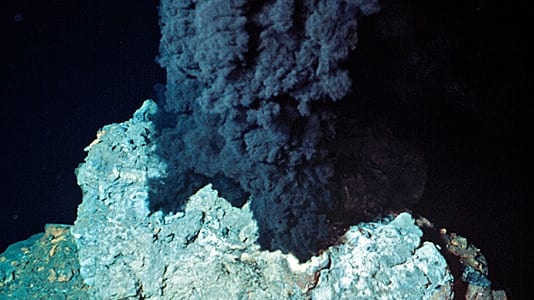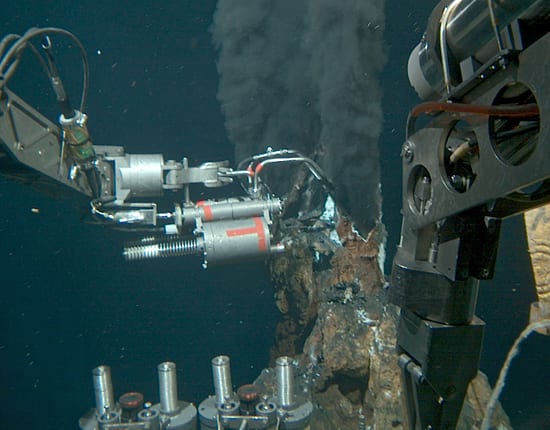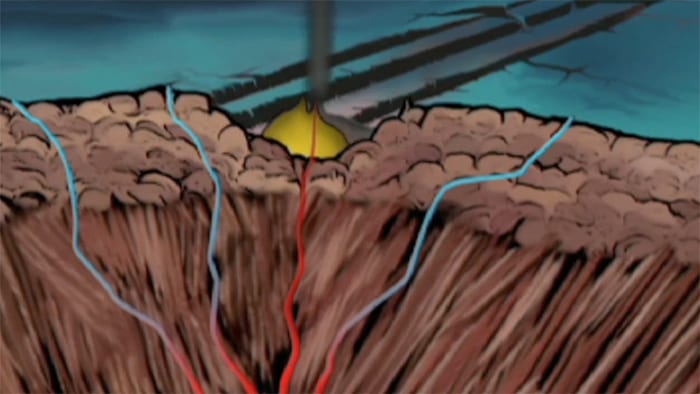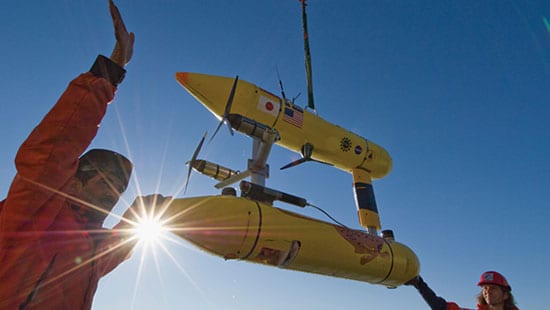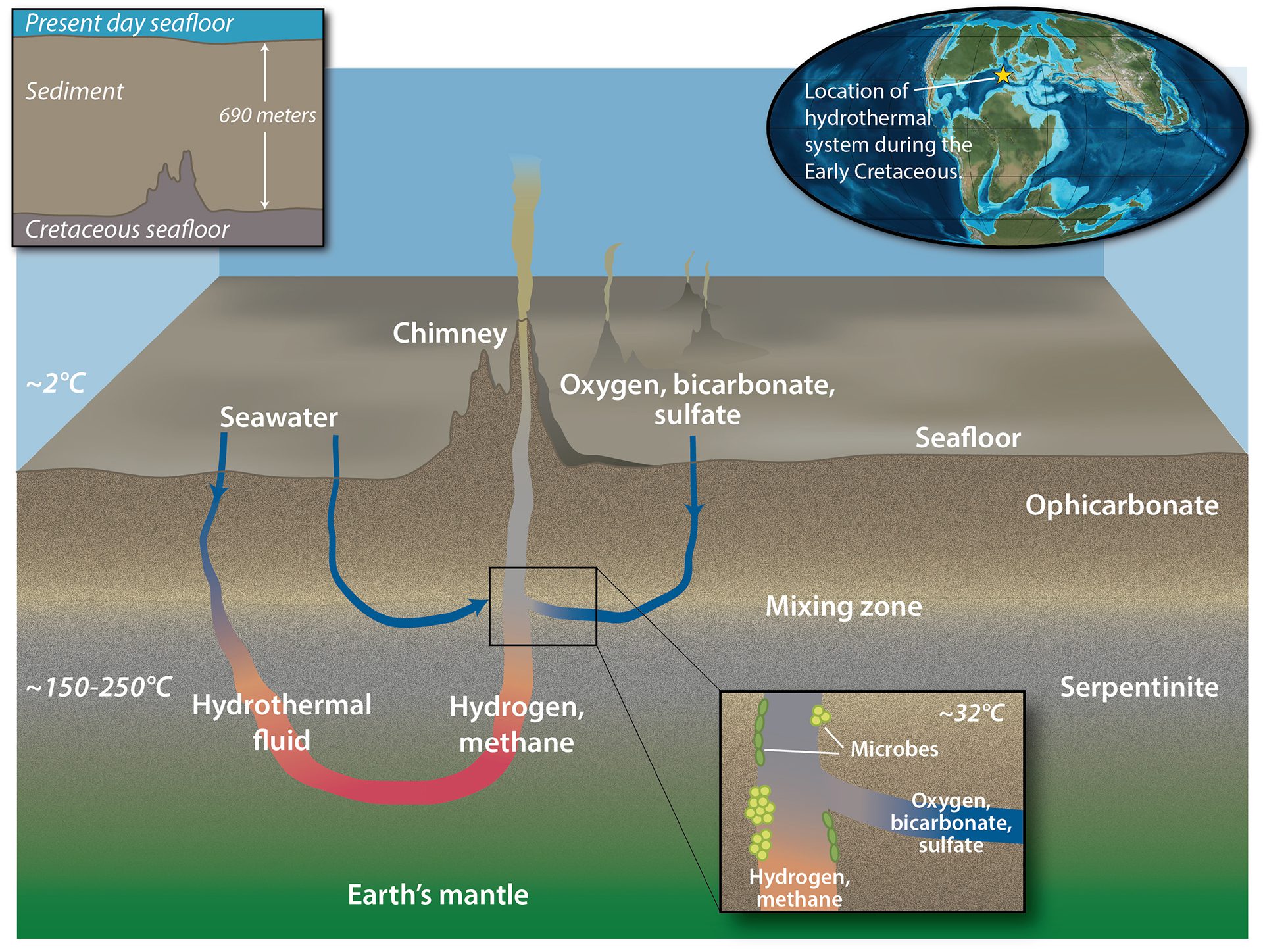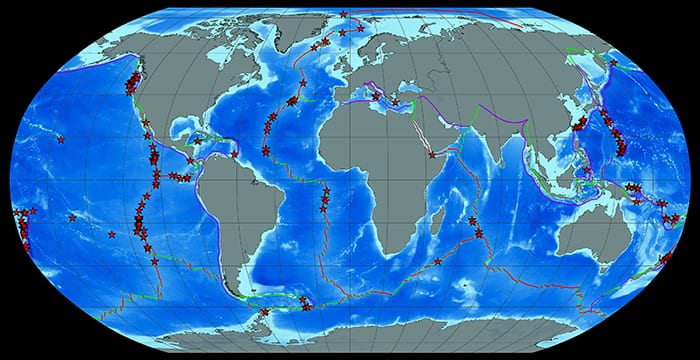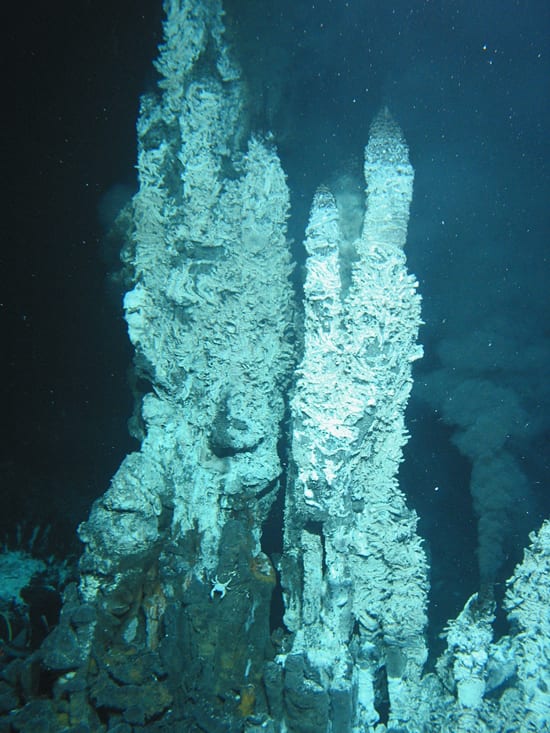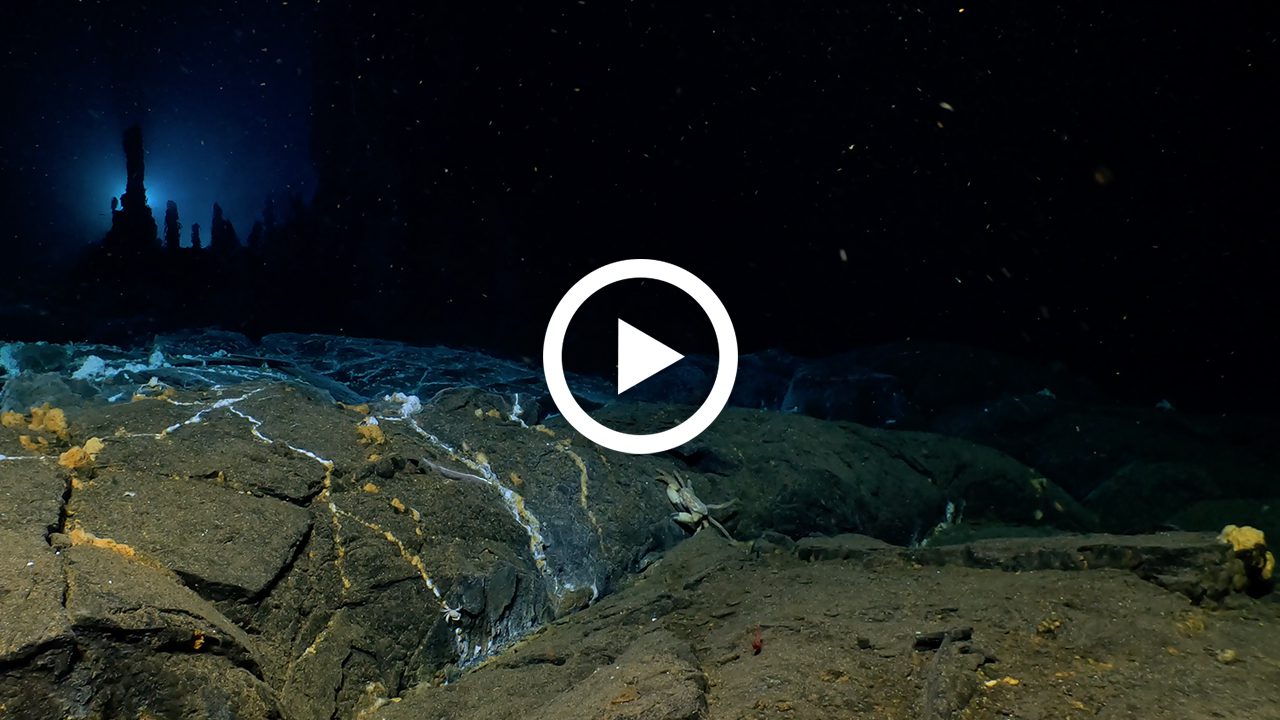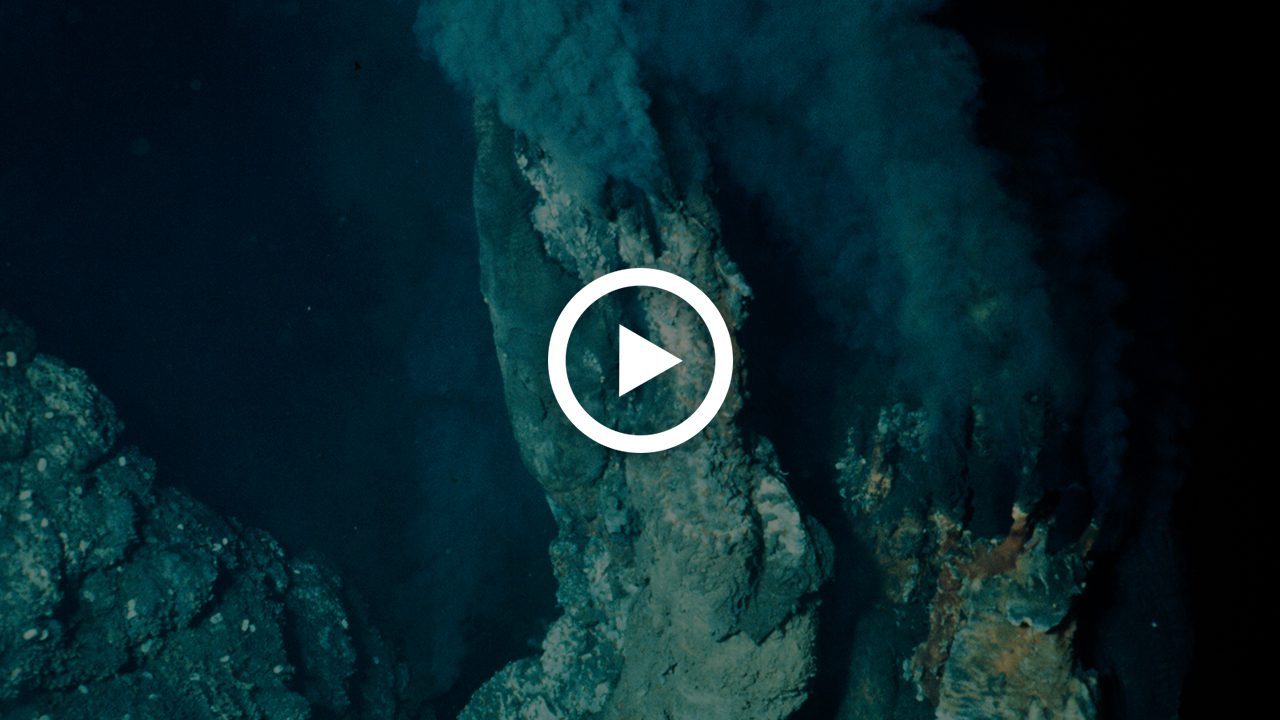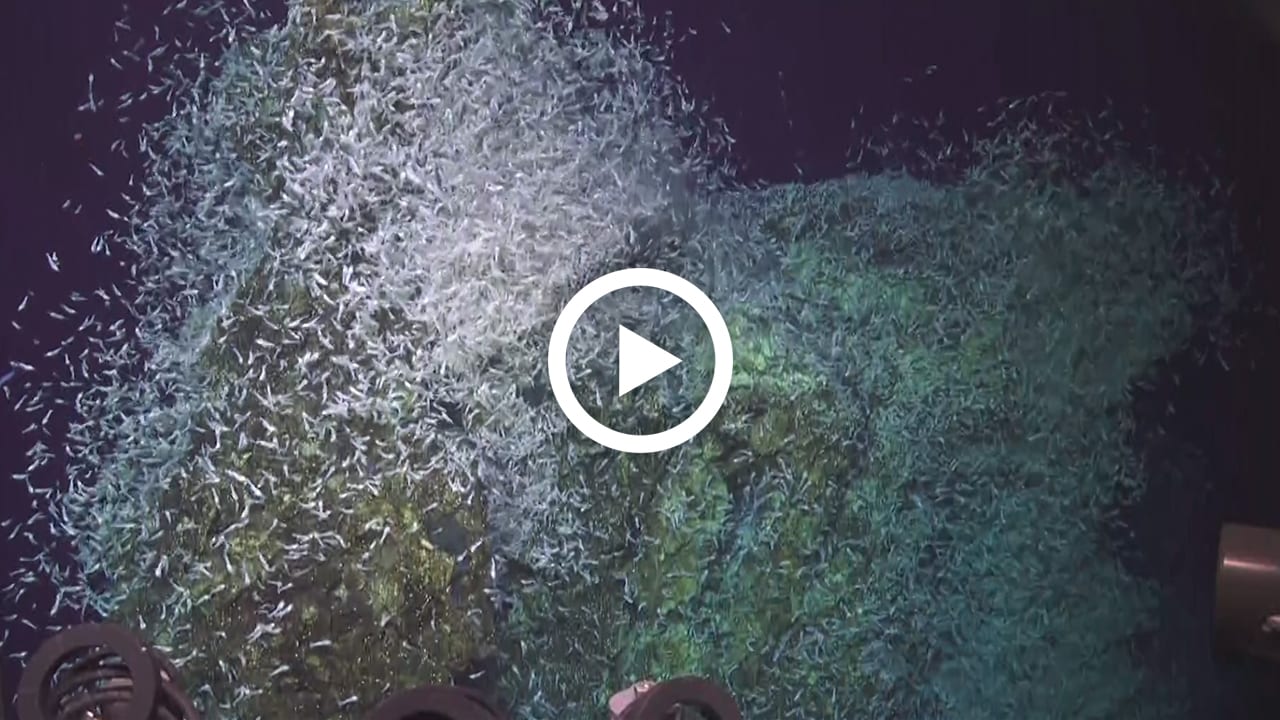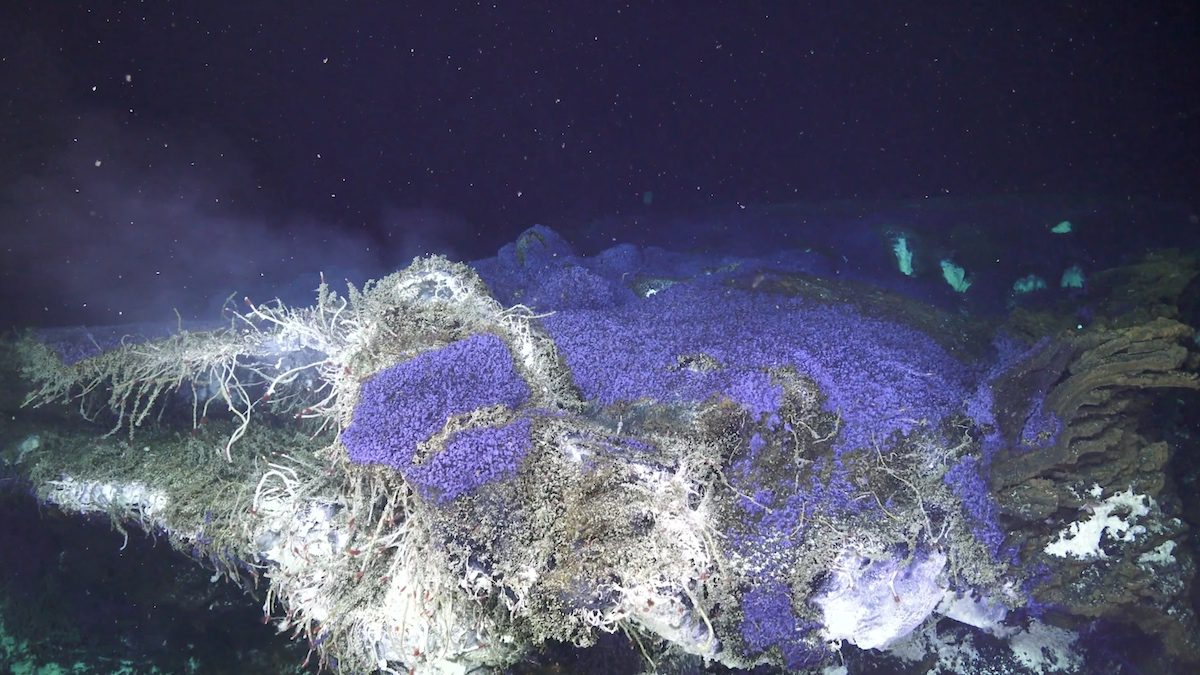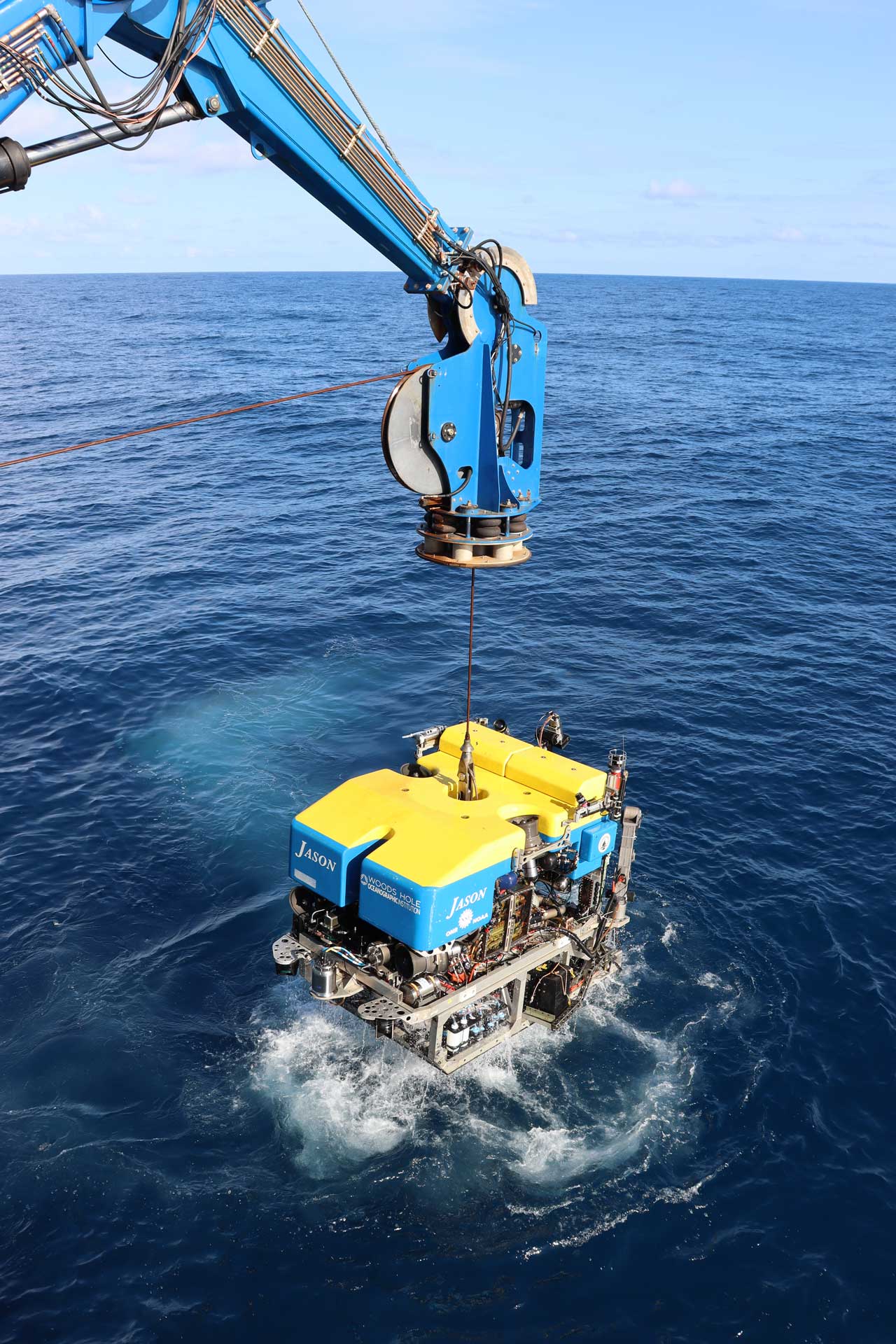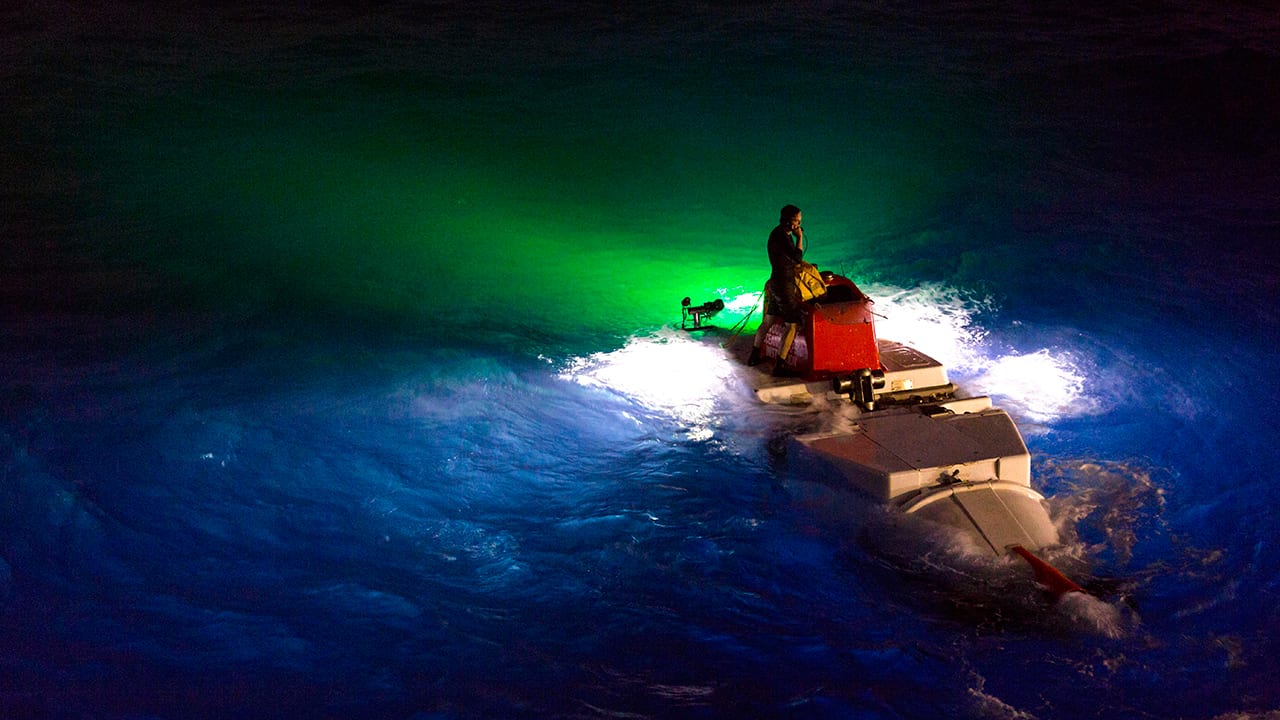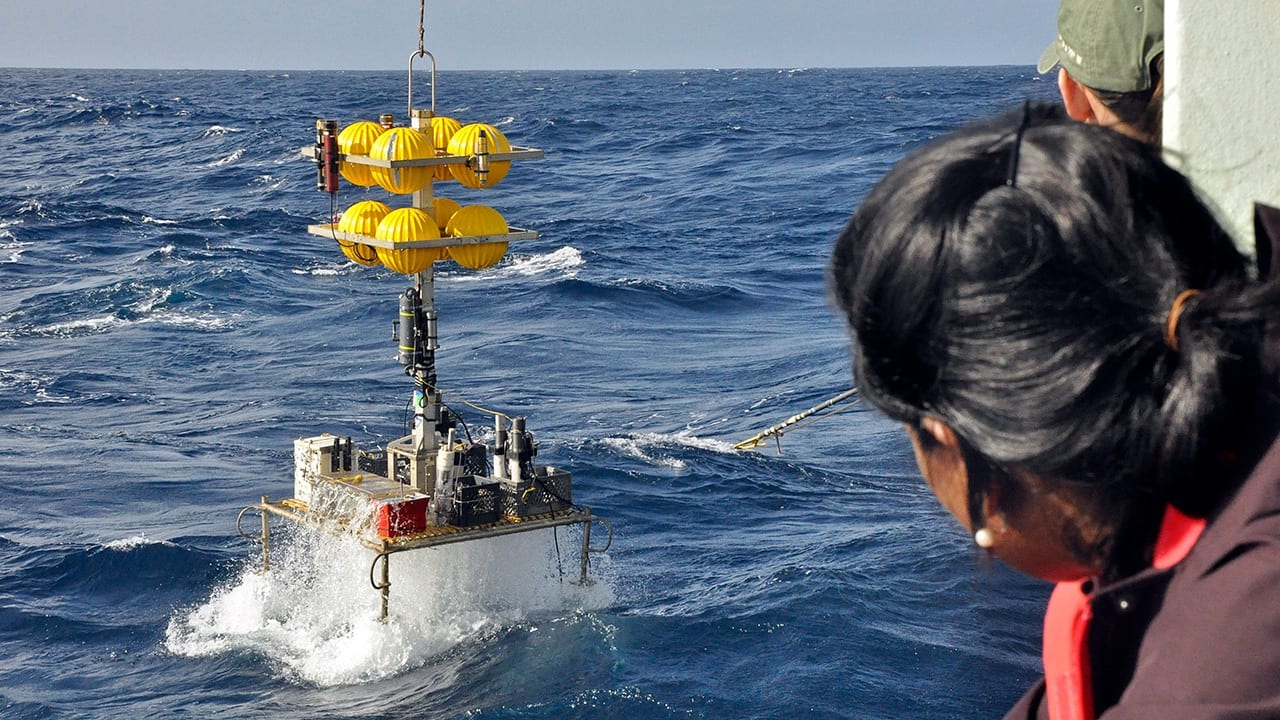Multimedia Items
2011 Global Hydrothermal Vents map
2011 Global Hydrothermal Vents map. Updated data source: InterRidge Vents Database, Version 2.1, release date 8 November 2011. (S. E. Beaulieu, E. T. Baker, C. R. German, and A. Maffei…
Read More2009 Global Hydrothermal Vents map
2009 Global Hydrothermal Vents map. Funding from InterRidge and Morss Colloquium Program at WHOI. Data sources: InterRidge Vents Database, Version 2.0, release date 5 Mar. 2010; University of Texas PLATES…
Read MoreOcean Encounters: Hydrothermal Vents
Like geysers and hot springs on land, hydrothermal vents form in volcanic regions on the ocean bottom, gushing hot, mineral-rich fluids from beneath the seafloor. Join us to hear what scientists have learned about vents and the surprising organisms that thrive there— and what they can teach us about the origins of life on Earth.
Read MoreHydrothermal Vents: Oasis in the dark
The waters around hydrothermal vents may seem harsh and inhospitable to life, but in reality, these regions are oases that support rich and diverse ecosystems that make a living off…
Read MoreOcean Robots: Hydrothermal Vents
Since they were discovered in the East Pacific in 1977, hydrothermal vents have captivated scientists and the public alike. New search methods using underwater robots are helping discover vent sites…
Read MoreHydrothermal Vents
Rustoleum around hydrothermal vents
Seafloor hydrothermal vents spew hot fluids filled with minerals, including iron. To their surprise, scientists discovered that some of the iron does not get oxidized when it hits oxygen-rich seawater,…
Read MoreHydrothermal Vents
WHOI researcher Susan Humphris explains what hydrothermal vents are and why they are important. Originally published online January 1, 2006
Read MoreThe Hunt for Red Hot Hydrothermal Vents
Illustration depicting where microbial life is discovered in vents
Scientist found mummified microbial life in rocks from a seafloor hydrothermal system that was active more than 100 million years ago during the Early Cretaceous when the supercontinent Pangaea was…
Read MoreVents Around the World
Sources: InterRidge Vents Database Version 2.0, credit: S.E. Beaulieu, 2010, InterRidge Global Database of Active Submarine Hydrothermal Vent Fields: prepared for InterRidge, Version 2.0. World Wide Web electronic publication; Beaulieu,…
Read MoreMapping Vents
Hydrothermal vents are not nearly as rare as initially thought when they were first discovered in 1977. Since then, scientists have come to better understand the conditions that create the wide…
Read MorePrecious metals from deep-sea vents
This sulfide structure is part of the “Bio 9” hydrothermal vent at 9 degrees north on the East Pacific Rise. Deep-sea hydrothermal vent systems are attracting considerable interest from commercial…
Read MoreIlluminating the Seafloor
Teamwork between a deep-sea robot and a human occupied submarine recently led to the discovery of five new hydrothermal vents on the seafloor of the eastern Tropical Pacific Ocean.
Read MoreLive from the seafloor in the Gulf of California
Join a team of scientists LIVE from the research vessel Roger Revelle in the Gulf of California. Learn about their work to study hydrothermal vents in the Guaymas Basin with the remotely operated vehicle Jason and the autonomous underwater vehicle Sentry.
Read MoreROV Jason captures underwater video during earthquake
In January and February 2020, scientists on R/V Atlantis explored hydrothermal vents on the Cayman Rise. They used the remotely operated vehicle Jason to get an up-close view of the vents and life around them. The vents lie on a seismically active part of the seafloor known as a mid-ocean ridge. Deep-sea shrimp swarm the vents, feeding on microbes that live on chemicals flowing from the vents. While they were there, a magnitude 4.7 earthquake struck just 100 miles away. Scientists will now be able to study how seismic activity affects hydrothermal vents and the life around them.
Read MoreInvestigating the world of microbes with ROV Jason
Deep-sea microbes convert chemicals in hydrothermal fluid into organic carbon, forming the base of these otherworldly hydrothermal vent ecosystems– and potentially playing an important role in the global carbon cycle.
Read MoreROV Jason explores Axial Seamount
During the PROTATAX23 cruise to Axial Seamount off the coast of Oregon, ROV Jason dove eight times, visited 19 hydrothermal vents, and collected 144 samples– including some from over 1500…
Read MoreThe Creepy, Unbelievably Inspiring World of Deep Sea Parasites
Ocean hitchhikers and bodysnatchers abound in the ocean, from the surface down to the deepest trenches. The question is, why? And is it a good thing?
Read MoreSplash in the Dark
The human-occupied submersible Alvin isn’t often recovered after dark—usually it’s on deck in time for dinner, even though the sub holds enough oxygen, food, and water for the pilot and…
Read MoreElevating Exploration
A deep-sea “elevator” carrying samples from hydrothermal vents is hoisted from the water as members of the science team aboard the research vessel Atlantis watch from the rail of the…
Read More
